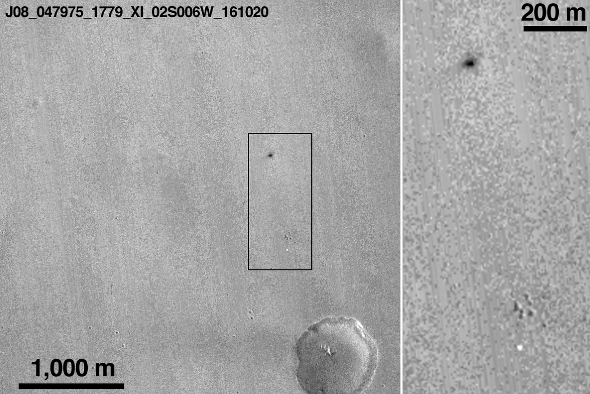The ride is a Proton M / Breeze M rocket. Launch is scheduled for 14 March 09:31:42 GMT at Baikonur Cosmodrome. First signal acquisition is expected at around 21:29 GMT.

Livestream: http://www.esa.int/Our_Activities/Space_Science/ExoMars/Watch_ExoMars_launch

Mission Overview:
"Trace Gas Orbiter - Searching For Signature Gases in the Martian Atmosphere"
"Schiaparelli: An Entry, Descent and Landing Demonstrator Module Testing Critical Technology For Future Missions"
"Possible Methane Sources and Sinks" (NASA/JPL-Caltech)

Proton-M launcher at the launch pad in Baikonur, Kazakhstan

Livestream: http://www.esa.int/Our_Activities/Space_Science/ExoMars/Watch_ExoMars_launch

Mission Overview:
The ExoMars programme is a joint endeavour between ESA and the Russian space agency, Roscosmos.
The primary goal of the ExoMars programme is to address the question of whether life has ever existed on Mars. This relates to its name, with the exo referring to the study of exobiology the possible existence of life beyond Earth (sometimes also referred to as astrobiology).
The programme comprises two missions. The first will be launched in March 2016 and consists of the Trace Gas Orbiter (TGO) and Schiaparelli, an entry, descent and landing demonstrator module. The second is planned for launch in 2018 and comprises a rover and surface science platform.
TGOs main objectives are to search for evidence of methane and other trace atmospheric gases that could be signatures of active biological or geological processes. Schiaparelli will test key technologies in preparation for ESA's contribution to subsequent missions to Mars.
The 2018 rover that will carry a drill and a suite of instruments dedicated to exobiology and geochemistry research. The 2016 TGO will act as a relay for the 2018 mission.
The primary goal of the ExoMars programme is to address the question of whether life has ever existed on Mars. This relates to its name, with the exo referring to the study of exobiology the possible existence of life beyond Earth (sometimes also referred to as astrobiology).
The programme comprises two missions. The first will be launched in March 2016 and consists of the Trace Gas Orbiter (TGO) and Schiaparelli, an entry, descent and landing demonstrator module. The second is planned for launch in 2018 and comprises a rover and surface science platform.
TGOs main objectives are to search for evidence of methane and other trace atmospheric gases that could be signatures of active biological or geological processes. Schiaparelli will test key technologies in preparation for ESA's contribution to subsequent missions to Mars.
The 2018 rover that will carry a drill and a suite of instruments dedicated to exobiology and geochemistry research. The 2016 TGO will act as a relay for the 2018 mission.
"Trace Gas Orbiter - Searching For Signature Gases in the Martian Atmosphere"
The Orbiter spacecraft is designed by ESA, while Roscosmos provides the launch vehicle. A scientific payload with instruments from Russia and Europe will be accommodated on the Orbiter to achieve its scientific objectives. The Orbiter will perform detailed, remote observations of the Martian atmosphere, searching for evidence of gases of possible biological importance, such as methane and its degradation products. The instruments onboard the Orbiter will carry out a variety of measurements to investigate the location and nature of sources that produce these gases. The scientific mission is expected to begin in December 2017 and will run for five years. The Trace Gas Orbiter will also be used to relay data for the 2018 rover mission of the ExoMars programme and until the end of 2022.
"Schiaparelli: An Entry, Descent and Landing Demonstrator Module Testing Critical Technology For Future Missions"
Schiaparelli, the ExoMars entry, descent and landing demonstrator module will provide Europe with the technology for landing on the surface of Mars with a controlled landing orientation and touchdown velocity. The design of Schiaparelli maximises the use of technologies already in development within the ExoMars programme. These technologies include: special material for thermal protection, a parachute system, a radar Doppler altimeter system, and a final braking system controlled by liquid propulsion.
"Possible Methane Sources and Sinks" (NASA/JPL-Caltech)

Proton-M launcher at the launch pad in Baikonur, Kazakhstan








